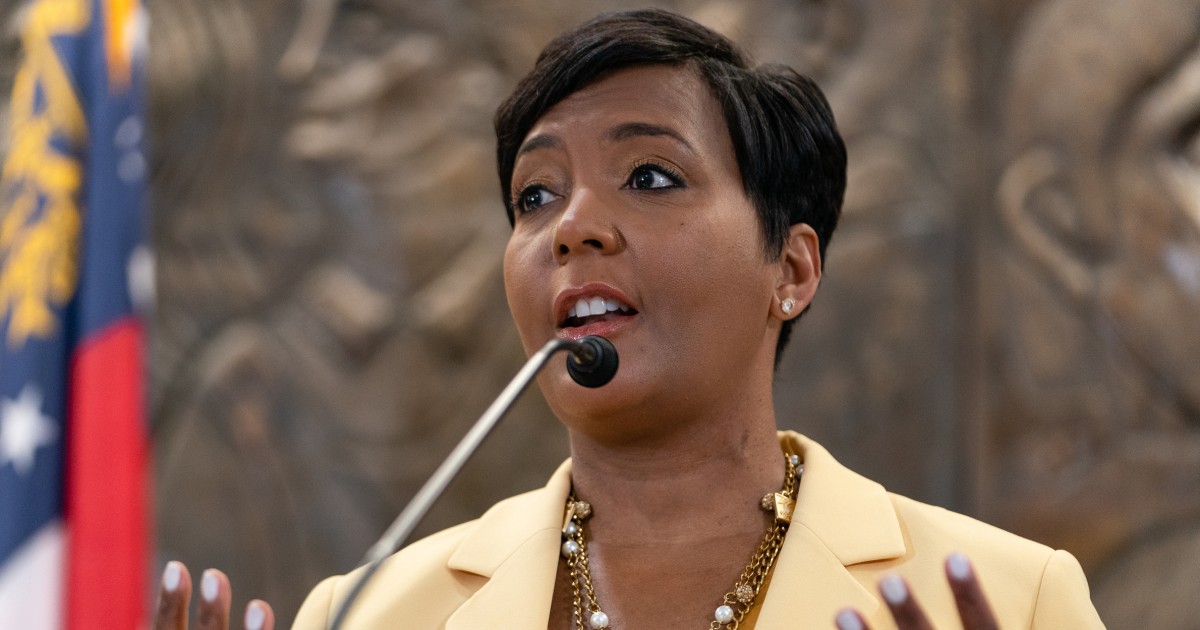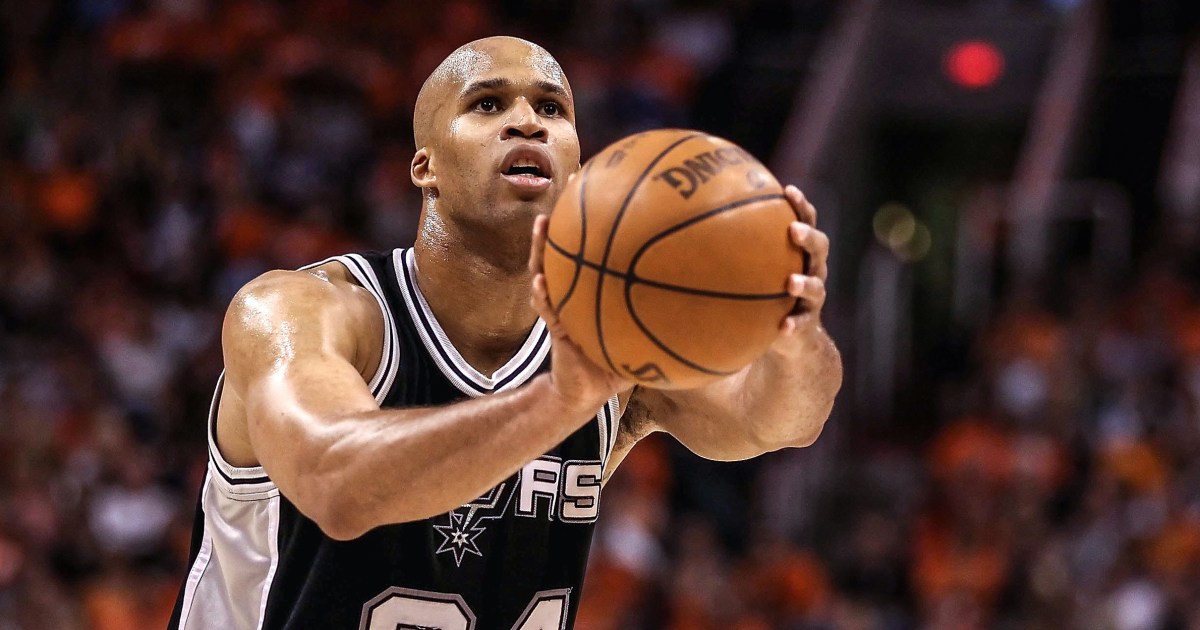Out of prison, TikTok influencers are reshaping the way we think about life behind bars
“Contradictory” by Keri Blaker is a partnership between NBC News and Project Marshall, a nonprofit news agency that covers the US criminal justice system. This column draws on Blakinger’s unique perspective as an investigative journalist and former detainee.
My favorite TikTok video begins with a well-dressed man in a cap walking down a snowy street.
“I’m going to my favorite teacher’s house since I made my 21-year prison bid,” he said in front of the camera. “She is BOMB. She didn’t know I was coming. Come on, let’s surprise her! ”
He knocked on the door, then back to camera.
“I’m so nervous,” the caption read.
A few seconds later, the door opened.
“Mr. Lacey? Oh my god! How are you?” His former teacher cried, breaking into laughter and then tears before inviting him inside.
The 54-second video went viral last year with more than 2.7 million views. Michael Lacey – who spent 21 years in prison in Indiana and now posts under the username Comrade Sinque – has become one of the leading creators in the TikTok prison niche, where people took the time to let the rest of the world know what it was like and gave faces to the concept of mass incarceration.
“People are just giving you a real life example of what that looks like,” he told me. And the community of previously incarcerated creators and their followers have been supportive, he said. “It is ironic,” he added, “but TikTok prison is one of the most active places on the app.”
There are, of course, another set of TikTok prisons – videos of people currently being held with pirated phones, who show the world the dire conditions they live in and the diversity of terrible food they are being served. Those, that Videos of all kinds started going viral near the beginning of the pandemic. But now, the posts of former prisoners seem to be getting more attention.
Some videos are heartwarming, like Lacey’s. Others are sober, like Jessica Kent’s post about give birth while in custody. Some are informative, like Tayler Arrington’s post about using sign language behind bars and how women handle their time in prison. This is followed by a 59-second video showing the 24-year-old in her living room looking directly into the camera, giving quick facts. It has garnered more than 11 million views.
“When you’re in the county jail, they don’t sell tampons – you have to make them yourself,” she said, leading to a barrage of horrifying comments.
There are still other videos that are very funny, like Colin ReaThe ridiculous assumptions people make about prisons. Hidden in every viral post is a little story of redemption: Here’s where once-in-a-lifetime influencers can become influencers, both making a living and shaping the way their followers are. think about prisons and the people inside them.
“People think ‘criminal’ and immediately they think the worst people you can imagine,” Rea told me from his home in Pennsylvania. what people realize, and behind that is a stigma.”
Like Lacey, he hopes that telling his story to his hundreds of thousands of followers can help change that.
More than 1 billion people use the app monthly, and there are hundreds of separate communities from BookTok to LesbianTikTok, from FoodieTok to StripperTok. To find those communities, users swipe up multiple times to scroll through the app’s curated collection of clips curated by the app’s tightly guarded algorithm.
After months of stalking and going through the videos, I got a personalized feed – called the Page for You – filled with videos about lesbians, depression and prison, this will come as no surprise to those who know me. When I started writing this column, I switched from scrolling to posting after shooting a few quick videos about prison jargon, How does gender work in prison? and the economics of prison labor.
I quickly realized I was better at words than videos and called my friend Morgan Godvin for help. Like me, she had a period of accusations stemming from her addiction and also joined TikTok a few weeks ago. Her first video – on why she went to jail – spread overnight.
As we scrolled and chatted, I noticed how difficult it was to find the colorists, unless I started scrolling through the other side of the prison TikTok, videos made by current inmates. Many of them don’t show their faces because it’s illegal to carry cell phones in prison, but when they do show up, the demographic is almost the opposite of TikTok after being released from prison.
When I pointed it out to Morgan, who was white, she recognized it, too.
“Most people who go to prison are people of color,” she said, “so why are most of the prison content creators white?”
Lacey, with 863,000 followers, is Black, but among the most followed prison accounts, he’s more of an exception than the rule. A thorough search of the app’s key-related hashtags turned up several other Black creators, including fitness trainers Dontrell Britton (322,000 followers) and prison consultant Dejarion Echols (56,000 followers).
“It’s just another example in the digital world of underrepresenting people of color,” Lacey told me. “I know that there are people on TikTok in the same lane as me. But when it comes to Black creators, you almost have to consciously try to find them – they don’t show up on the Page for you. ”
Casey Fiesler, an assistant professor of research in technology ethics at the University of Colorado Boulder, was not surprised to hear Lacey’s observations. Still, she said, it’s hard to point to a single reason why many of the most-followed TikTok creators are white.
“There’s a lot of confounding factors about who’s on TikTok and who’s not, even who’s out of prison and who hasn’t,” she said. “But there’s certainly been a lot of conversation over the last few years about the potential for racism in the TikTok algorithm.”
After all, since the goal is to predict which videos users will like, algorithms can also reflect the biases of users and their human creators.
In 2020, TikTok cited a “technical glitch” and sorry for holding back “Black Lives Matter” posted and vowed to promote more diversity on the platform. A representative did not immediately respond to a request for comment on this column.
As Morgan and I continued to talk about the ups and downs of the platform, she weighed the benefits of being able to share the experience of living behind bars with her thousands of followers — and then offered another suggestion. about why the platform may have fewer Black creators posting. about life after prison.
“There will probably be fewer creators of color because they can’t stand the stigma of being an offender,” she said. “I was able to build my entire professional career on the fact that I was in prison, and I had to realize that there was an element of privilege in that.”
at Blogtuan.info – Source: nbcnews.com – Read the original article here



